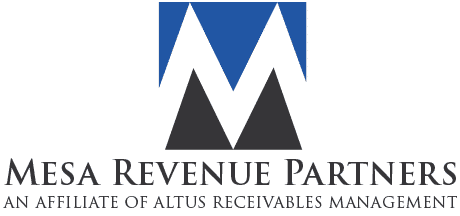How To Use AR Aging Reports To Anticipate Risks & Optimize Collection Strategies
Every successful business knows that making a sale is only half the job; the real challenge lies in getting paid on time. While a growing customer base is a sign of health, delayed payments can quietly eat away at your profits. In fact, 82% of small businesses fail due to poor cash flow management, according to a US Bank study published by Entrepreneur. This highlights just how critical it is to stay ahead of unpaid invoices.
That’s where AR aging reports come into play. Far from being just another spreadsheet, these reports offer crucial insight into the financial heartbeat of your business, helping you anticipate risks and improve collection strategies.
Understanding AR Aging Reports: A Quick Breakdown
An AR aging report is a tool that categorizes a company’s accounts receivable based on how long invoices remain unpaid. The categories typically include 0–30 days, 31–60 days, 61–90 days, and 90+ days. This breakdown offers businesses a clear view of outstanding debts, helping them track who owes money and for how long.
Rather than just listing overdue accounts, the AR aging report serves as an early warning system. It highlights problem accounts and payment trends, enabling businesses to take proactive measures such as reaching out to clients or consulting a commercial investigations team to gather more information about payment behavior or creditworthiness.
Why Timely Receivables Are Crucial For Maintaining Healthy Cash Flo
Every business needs consistent cash flow to thrive. When invoices go unpaid, that stream slows down, creating strain on essential areas such as:
- Payroll: Delayed payments can impact your ability to meet salary commitments.
- Daily Operations: Without liquidity, it’s harder to purchase materials, fund projects, or manage overhead.
- Growth Initiatives: Late receivables reduce the funds available for expansion, hiring, or investments.
Using AR aging reports regularly helps you spot and act on these issues early. For example, your report might reveal that a long-time customer, once known for paying on time, is now habitually 60 days late. This valuable insight allows you to:
- Initiate a proactive follow-up to understand the delay.
- Adjust payment terms to accommodate new circumstances or reduce risk.
- Escalate the matter to a commercial debt collection agency if necessary, to recover the balance efficiently.
By identifying and addressing payment delays before they escalate, businesses can avoid deeper financial disruptions.
How AR Aging Reports Drive Strategic Business Decisions & Improve Collections
So, what makes these reports more than just a financial snapshot? The answer lies in how businesses use the data.
1. Enhancing Credit Control
By monitoring patterns in customer payments, companies can make smarter credit decisions. Clients who habitually pay late might be given stricter credit limits or required to pay upfront. Conversely, consistent payers could be rewarded with extended terms, improving client loyalty and building trust.
2. Prioritizing Collection Efforts
Not all delinquent accounts require the same approach. An AR aging report helps focus collection efforts on high-value accounts with the oldest debts, improving the efficiency of internal collections. When internal efforts fall short, businesses may choose to work with a business debt collection agency to recover hard-to-collect accounts while preserving customer relationships.
3. Informing Business Strategy
Cash flow is the lifeblood of business decisions. AR aging data can influence a range of strategic choices, from hiring and inventory purchasing to expansion planning. When leadership has a clear view of incoming cash and potential delays, they can make better-informed, less risky decisions.
Avoid These Common Mistakes With AR Aging Reports To Improve Cash Flow
While AR aging reports offer critical insights, their value depends on accuracy and use. Here are a few mistakes to watch out for:
- Outdated Reports: Relying on data that’s weeks or months old can mislead teams. To be effective, aging reports should be updated regularly, ideally on a weekly or bi-weekly basis.
- Inconsistent Record-Keeping: Invoices must be entered correctly, with accurate issue and due dates, to reflect the true aging of receivables.
- Failing to Act: Simply having the report isn’t enough. It’s how you act on it that drives results. Ignoring persistent delinquencies can create a culture where late payment is tolerated.
How AR Aging Reports Support Collections & Litigation
In some cases, unpaid invoices escalate beyond internal reminders and friendly follow-ups. When this happens, AR aging reports play a central role in supporting more formal collection efforts or legal action. They serve as documented evidence of attempts to collect payment, offering details like invoice amounts, dates, and communication history.
Legal teams or third-party collectors, such as a corporate collections agency, rely on accurate AR records to evaluate the strength of a case and take the appropriate legal steps.
When To Seek External Help For AR Aging: Signs You Need a Collection Agency
There comes a point when internal resources may no longer be enough. Whether due to time constraints, strained client relationships, or legal complexity, turning to external professionals can provide both relief and results. Here are a few signs that it might be time to consider external assistance:
- A growing backlog of invoices over 90 days past due.
- Clients ignoring repeated collection attempts.
- Delinquent accounts in different jurisdictions or countries.
- High-value receivables with a risk of total loss.
Partnering with an international commercial collections agency can bring specialized tools, legal expertise, and multilingual support to the table, especially when navigating cross-border disputes or language barriers.
Maximize The Effectiveness Of AR Aging Reports With These Best Practices
To get the most value from your AR aging reports, consider the following best practices:
- Review regularly: Set a routine to check your AR report weekly or bi-weekly. Consistency helps spot issues early.
- Segment customers: Group your clients by risk profile, industry, or payment history for tailored follow-up strategies.
- Combine with credit checks: Use reports in tandem with a commercial background check to evaluate new or existing clients before extending credit.
- Train your team: Ensure that your finance and sales departments understand how to read the report and act on the insights.
- Communicate clearly: Sometimes, delayed payments come from confusion. Transparent invoicing and reminders can drastically reduce overdue balances.
- Leverage technology: Use automated AR aging reports available through accounting and ERP platforms. These tools provide real-time data, customizable dashboards, and alerts, enabling faster responses and more coordinated collections efforts.
Why AR Aging Reports Are Essential For Healthy Business Growth & Financial Control
An AR aging report is a strategic asset. When used effectively, it gives businesses the clarity and control they need to maintain healthy cash flow, build stronger client relationships, and respond proactively to financial risks.
Whether you’re a small business owner or a CFO managing a large portfolio, don’t underestimate the power of a well-maintained AR aging report. It can be the difference between steady growth and financial uncertainty.
Improve Your AR Management Strategy With Mesa Revenue Partners’ Expertise
If you’re looking to reduce outstanding receivables, recover lost revenue, or streamline your commercial collections process, Mesa Revenue Partners is here to help. Our experts bring years of experience in B2B collections, international recovery, and commercial litigation support.
Let’s work together to turn your AR challenges into opportunities. Contact us at Mesa Revenue Partners today!








